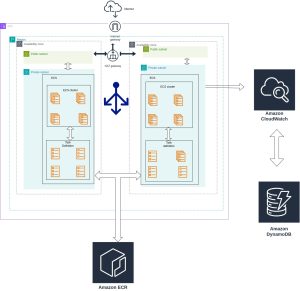GROW YOUR BUSINESS WITH US
Our Blogs
Setup TLS Certificate Management in Kubernetes with Cert-Manager using Helm
Introduction: In the realm of Kubernetes, managing SSL/TLS certificates can be a daunting task, especially as your infrastructure scales. Handling certificate issuance, renewal, and rotation across various services and applications requires precision and automation. This is where cert-manager, a popular Kubernetes certificate management controller, comes into play. In this guide, we’ll explore how to leverage cert-manager along with Helm, Kubernetes’ package manager, to streamline certificate management within your cluster. What is cert-manager? Cert-manager is a Kubernetes add-on that simplifies the
Simplifying AWS Amplify for Deployment of React Apps
In today’s rapidly evolving development landscape, the swift and efficient deployment of web applications is paramount. Fortunately, with the aid of services such as AWS Amplify and version control platforms like GitHub, deploying React applications has become remarkably streamlined. In this blog post, we’ll delve into the process of harnessing AWS Amplify to deploy a React app, utilizing GitHub as the source code repository. What is AWS Amplify? AWS Amplify is a comprehensive set of tools and services provided by
Provisioning Infrastructure using Terraform Modules for AWS Lambda, API Gateway, and API Integration
In today’s digital era, deploying applications efficiently is paramount for staying competitive. AWS Lambda and API Gateway have transformed how developers build and deploy serverless applications, offering scalability, flexibility, and cost-effectiveness. When paired with Terraform, an infrastructure as code tool, the deployment process becomes even smoother. But what if you want to deploy an application using a container image stored in Amazon Elastic Container Registry (ECR)? Let’s explore how to deploy an application using AWS Lambda with API Gateway and
Configuring Postfix on Ubuntu Server to Accept Mail from Any Source and Pipe to Desired Destinations
In the realm of server administration, email is a critical component. Whether you’re running a personal blog, a small business, or managing enterprise-level systems, having a reliable mail server setup is essential. Among the various options available, Postfix stands out as a popular choice due to its reliability, security, and flexibility. In this guide, we’ll walk through the steps of setting up Postfix on an Ubuntu server to accept mail from any source and pipe all to you desired destination.

Deploy VPC, ECR, ECS Fargate, Load Balancers, CloudWatch Monitoring, DNS, and DynamoDB on AWS Using Terraform, and Manage Environments Using Terraform Workspaces
In today’s rapidly evolving technological landscape, businesses are increasingly turning to cloud services for their infrastructure needs. Amazon Web Services (AWS) stands out as a frontrunner in this domain, offering a vast array of services to cater to diverse requirements. However, managing AWS infrastructure efficiently can be a daunting task without the right tools and strategies in place. This is where Terraform, an infrastructure as code tool, comes into play, enabling users to define and provision infrastructure resources in a

Step-by-Step Guide to Setting Up Your Own Mastodon Server
What is Mastodon? Mastodon is a decentralized social network comprised of separate servers focused on specific themes, topics, or interests. Users can join these servers, follow others, engage in conversations, and perform activities similar to what you’d typically do on platforms like Twitter. Mastodon has been in existence since March 2016, but it gained significant popularity in late 2022, thanks to a notable acquisition of a particular social media platform. A Mastodon website can function independently, much like a regular
